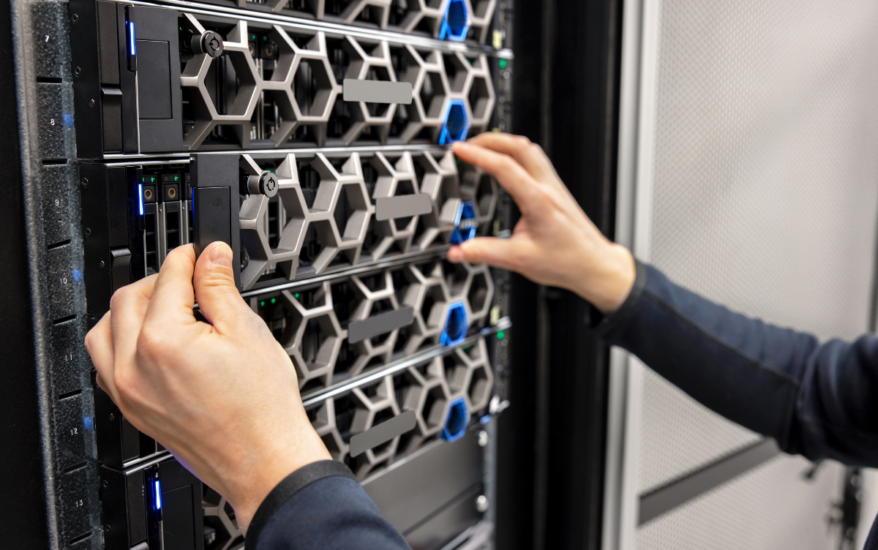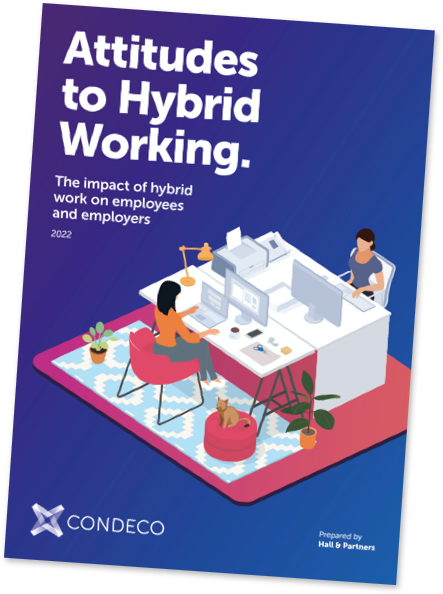
For years, workplace technology has been centered around interfaces — keyboards, screens, apps, and dashboards. Employees have had to log in, click, type, and navigate through systems to access information or complete tasks. But what if the workplace could anticipate needs, automate processes, and seamlessly connect employees to spaces and resources without requiring constant input?
This is the promise of ambient computing — a technology that is quietly transforming workplaces into intelligent, interconnected ecosystems.
For enterprise leaders managing large, complex organizations, ambient computing is more than just another tech trend; it represents a strategic shift in how workplaces function. By blending AI, IoT, and real-time data, ambient computing enables office environments to adapt to employees, optimize resources, and improve productivity.
This article explores how ambient computing is reshaping the interconnected workplace, where meeting rooms book themselves, facilities self-regulate, and employees move seamlessly between physical and digital spaces.
What is ambient computing?
Ambient computing refers to technology that operates in the background, responding to human behavior without requiring explicit commands. Unlike traditional computing, which demands active interaction — such as typing a search query or opening an app — ambient computing is designed to be invisible yet intuitive.
Smart assistants like Alexa or Google Home exemplify this concept by processing spoken commands and automating tasks. In the workplace, ambient computing extends beyond voice assistants, embedding intelligence into the very fabric of office spaces.
A workplace powered by ambient computing can automatically adjust lighting, temperature, and air quality based on occupancy and user preferences. It can seamlessly schedule and optimize space usage, ensuring employees always have access to the right environment for their tasks. It can enable frictionless access control, allowing employees to move through buildings securely without badges or check-ins. It can also anticipate maintenance needs, with IoT sensors detecting and resolving equipment issues before they disrupt operations. The result is a more responsive, efficient, and intuitive workplace experience.
Why ambient computing is key to interconnected workplaces
Modern enterprises face an unprecedented level of workplace complexity. Hybrid work models, evolving employee expectations, and sustainability initiatives are pushing organizations to rethink how they design and manage work environments. The traditional static office model no longer works. An interconnected workplace bridges the gaps between employees, spaces, and systems, ensuring seamless collaboration and efficiency.
Smarter space utilization with AI and IoT
Office space is one of an enterprise’s biggest expenses, yet many meeting rooms remain empty while employees struggle to find a desk. Ambient computing solves this inefficiency by continuously analyzing space usage and making real-time adjustments. AI-driven room booking systems automatically release unused reservations, ensuring no space is wasted. Occupancy sensors track room usage and suggest alternative meeting areas if an employee’s preferred space is full. Hot desking solutions allow employees to book workstations instantly through facial recognition or mobile proximity. This dynamic approach optimizes office layouts, reducing costs while enhancing employee flexibility.
Frictionless workplace experiences for employees
Employees lose valuable time navigating complex workplace systems — logging into different platforms to book meeting rooms, request IT support, or adjust office settings. Ambient computing eliminates this friction. Touchless entry systems recognize employees as they arrive, granting access without keycards or sign-ins. Voice-activated assistants allow employees to schedule meetings, adjust climate settings, or check team availability without lifting a finger. Context-aware notifications provide real-time updates, such as when a preferred meeting room becomes available or when office density reaches a safe threshold. By making workplace interactions seamless, ambient computing removes barriers to productivity and enhances employee satisfaction.
Energy efficiency and sustainability
Enterprises are under increasing pressure to meet sustainability goals, and office buildings are a major contributor to energy consumption. Ambient computing enables smarter energy management by dynamically adjusting resource use based on real-time data.
Smart HVAC systems learn employee habits, adjusting airflow and temperature only where needed.
Automated lighting reduces energy waste by dimming or turning off lights in unoccupied areas.
Predictive maintenance helps facility teams address inefficiencies before they lead to excessive energy consumption.
By making buildings more responsive and adaptive, ambient computing lowers operational costs while supporting corporate sustainability initiatives.
Predictive maintenance and workplace safety
Facility managers in large enterprises juggle multiple critical systems, from HVAC units to elevators and security infrastructure. Reactive maintenance leads to costly downtime and disruptions. Ambient computing transforms workplace maintenance from reactive to proactive by leveraging IoT sensors that continuously monitor equipment health, detecting early signs of wear and tear. AI-driven alerts notify maintenance teams before small issues escalate into major failures. Automated air quality monitoring ensures compliance with workplace safety regulations, adjusting ventilation if CO2 levels rise too high. In an interconnected workplace, these systems work together to create a safer, more resilient work environment.
The road to fully ambient, interconnected workplaces
Many enterprises already use elements of ambient computing, such as IoT sensors, AI-powered workplace apps, and automated security systems, but the next step is full integration. The most effective ambient computing environments are those where all systems communicate seamlessly. Workplace analytics platforms aggregate real-time data from different systems, providing facility managers with a unified view of office performance. AI-driven automation ensures meeting rooms, workspaces, and resources are available precisely when and where they are needed. Security, energy management, and workplace experience tools operate in harmony, optimizing every aspect of the built environment. Enterprises that embrace this level of interconnectivity will not only reduce costs and inefficiencies but also create a workplace experience that attracts and retains top talent.
How enterprise leaders can prepare for ambient workplaces
For large enterprises looking to future-proof their workplaces, the first step is to conduct a comprehensive audit of their current technology ecosystem. Identifying gaps where automation, AI, or IoT could improve workplace efficiency allows organizations to make informed decisions about necessary upgrades.
Investing in workplace platforms that support real-time data analytics, automation, and interoperability ensures that systems work together rather than in isolated silos. Security and compliance should also be top priorities, as ambient computing relies on vast amounts of data. Strong cybersecurity protocols and data privacy measures must be in place to protect sensitive workplace information. While the transition to an interconnected workplace will not happen overnight, organizations that adopt incremental, strategic improvements will position themselves at the forefront of the modern workplace experience.
The future is invisible, but powerful
The best technology is the kind you don’t notice—it just works. Ambient computing is bringing that level of seamless intelligence to the workplace. For enterprise leaders, the shift toward interconnected workplaces isn’t just about convenience—it’s about creating a smarter, safer, and more productive work environment. As workplaces evolve, the organizations that invest in invisible intelligence today will be the ones leading the future of work tomorrow. Those that embrace ambient computing will unlock new levels of efficiency, sustainability, and employee satisfaction, redefining what it means to work in a truly interconnected world.



